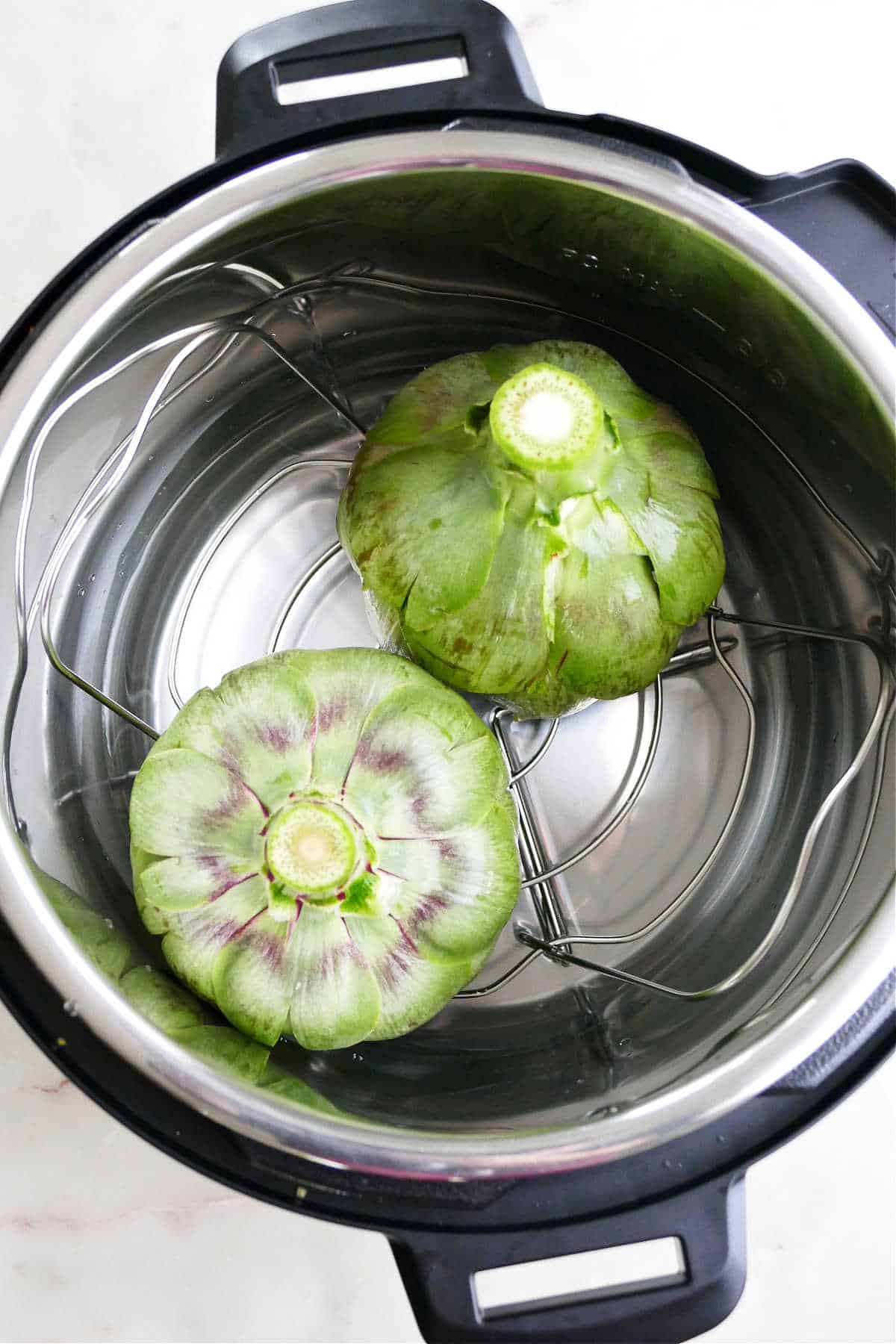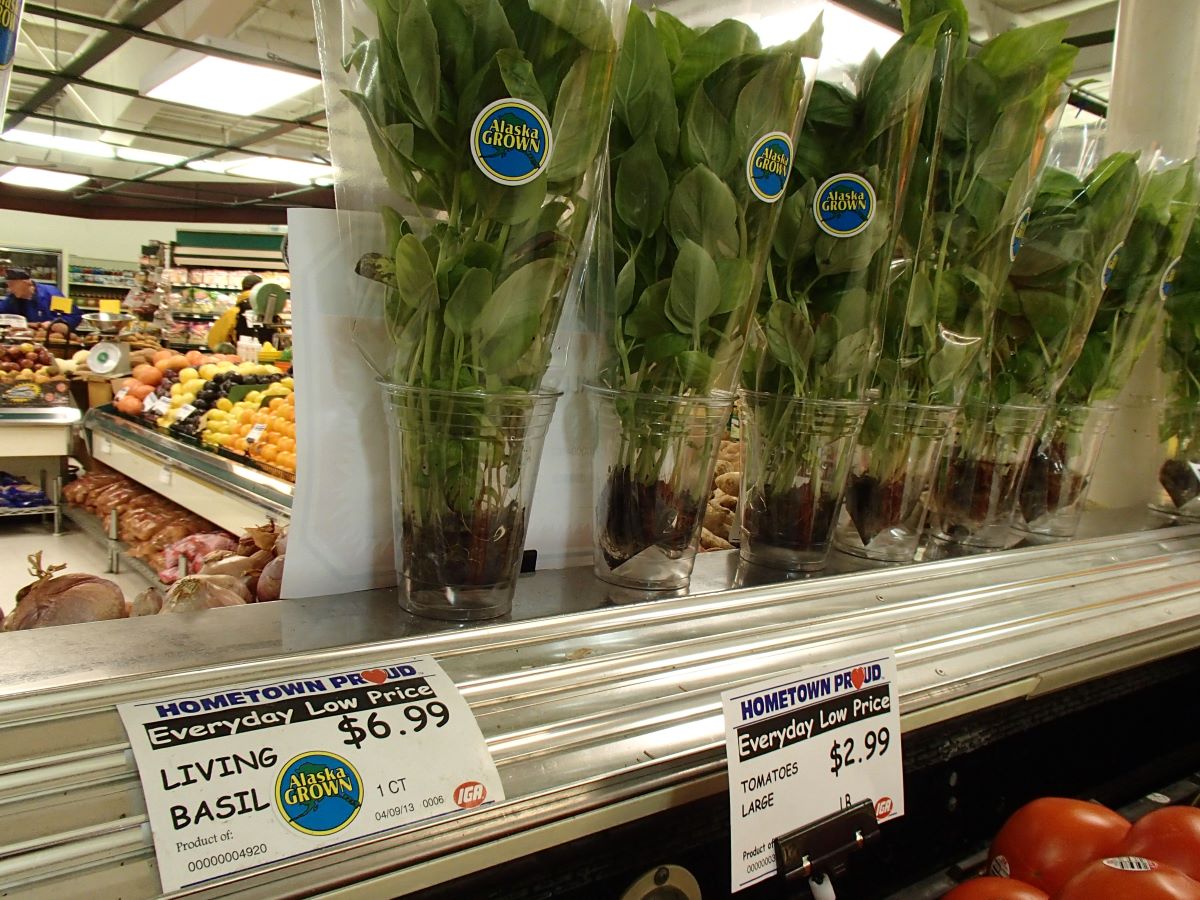

Articles
How To Store An Artichoke
Modified: October 24, 2024
Learn how to properly store an artichoke to keep it fresh and flavorful. Follow our step-by-step guide and preserve the quality of your articles for longer.
(Many of the links in this article redirect to a specific reviewed product. Your purchase of these products through affiliate links helps to generate commission for Storables.com, at no extra cost. Learn more)
Introduction
Welcome to the world of artichokes! With their unique flavor and versatile uses in various recipes, artichokes are a delightful addition to any culinary adventure. Whether you’re a seasoned chef or a home cook looking to explore new flavors, it’s important to know how to properly store artichokes to ensure their freshness and quality.
In this article, we will guide you through the process of choosing, preparing, and storing artichokes. We’ll cover everything from storing fresh artichokes in the refrigerator to freezing them for long-term preservation. So, let’s dive in and discover the secrets to keeping your artichokes fresh and delicious!
Key Takeaways:
- Properly storing artichokes is essential for maintaining their freshness and flavor. From refrigeration to freezing, follow the correct techniques to enjoy delicious artichokes in various culinary creations.
- Choose fresh artichokes, store them properly, and follow helpful tips to prolong their shelf life. Whether refrigerating, freezing, or cooking, savor the unique flavor of artichokes in your favorite dishes.
Read more: How To Store Artichokes
Choosing and Preparing the Artichoke
Before we delve into storing artichokes, it’s essential to know how to select and prepare them properly. Here are a few key guidelines to keep in mind:
- Choose fresh artichokes with tightly closed leaves and a vibrant green color. Avoid ones with browning or shriveled leaves, as these indicate they are past their prime.
- Look for artichokes with firm, dense heads. Gently squeeze the artichoke, and it should feel weighty and solid.
- Inspect the artichoke’s stem. A fresh artichoke should have a short, thick stem that feels sturdy when pressed.
- Prior to storing, it’s important to properly prepare the artichoke. Start by rinsing it under cold water to remove any dirt or debris. Then, trim off the top third of the artichoke’s leaves and snip off the prickly tips.
- If desired, you can also remove the tough outer leaves until you reach the more tender inner leaves.
- To prevent browning, you can squeeze lemon juice over the artichoke or submerge it in a bowl of lemon water for a few minutes.
By following these guidelines, you ensure that you start with fresh and well-prepared artichokes, setting the stage for proper storage.
Storing the Artichoke in the Refrigerator
If you plan to use your artichokes within a few days, storing them in the refrigerator is the best option. Here’s how:
- Wrap each artichoke loosely in a slightly damp paper towel to maintain moisture.
- Place the wrapped artichokes in a plastic bag or an airtight container. This will help retain their freshness and prevent any odors from seeping in.
- Store the artichokes in the refrigerator’s crisper drawer, which provides a slightly more humid environment to prolong their shelf life.
- Keep the temperature of your refrigerator between 32-40°F (0-4°C) to maintain optimal freshness.
It’s essential to note that artichokes are best enjoyed when fresh, so try to use them within 3-4 days of storing. Keep an eye out for any signs of spoilage, such as mold or a foul odor.
Remember, refrigeration can slightly alter the texture of the artichoke, making it a bit denser. However, this should not affect its taste or overall quality.
Freezing Artichokes
If you have an abundance of artichokes that you cannot consume within a few days, freezing them is a great preservation method. Follow these steps to freeze artichokes:
- Start by blanching the artichokes. Blanching helps preserve the texture and flavor while also killing any bacteria on the surface. To blanch, bring a large pot of water to a boil and add the artichokes. Cook them for 5-7 minutes until they become slightly tender.
- Next, remove the artichokes from the boiling water and place them in an ice bath to stop the cooking process. Allow them to cool for a few minutes.
- Once cooled, cut the artichokes in halves or quarters, depending on your preference. Remove the choke and any tough outer leaves, leaving only the tender heart and bottom.
- Drain the artichoke pieces and pat them dry with a clean towel to remove excess moisture.
- Place the prepared artichokes in airtight freezer bags or containers. Squeeze out as much air as possible before sealing.
- Label the bags or containers with the date of freezing to keep track of their freshness.
- Store the artichokes in the freezer at a temperature of 0°F (-18°C) or below.
Frozen artichokes can retain their quality for up to 8-12 months. However, it’s important to note that the texture may change slightly after freezing, making them more suitable for cooked dishes rather than eating raw.
When using frozen artichokes, there’s no need to thaw them before cooking. You can directly add them to soups, stews, pasta dishes, or any other recipe that calls for artichokes.
By freezing artichokes, you can enjoy their unique flavor even when they’re out of season, adding a delightful touch to your favorite dishes.
Store artichokes in the refrigerator in a plastic bag to help retain their moisture. They can last for up to a week when stored this way.
Storing Cooked Artichokes
If you have cooked artichokes left over from a meal and want to store them for future use, here’s how:
- Allow the cooked artichokes to cool completely before storing them. Leaving them at room temperature for around 1-2 hours should be sufficient.
- Once cooled, wrap each individual artichoke tightly in plastic wrap or place them in airtight containers. This will help prevent them from drying out.
- Label the wrapped artichokes with the date to keep track of their freshness.
- Store the cooked artichokes in the refrigerator, preferably in the crisper drawer where the temperature is slightly more humid.
- Use the cooked artichokes within 3-4 days for the best flavor and quality.
It’s important to note that cooked artichokes may not retain the same texture as when they were freshly cooked. They may become slightly softer or mushier, but this should not significantly affect their taste or usability in recipes.
Stored cooked artichokes are perfect for incorporating into salads, pasta dishes, sandwiches, or as a delicious topping for pizzas. Get creative and explore various recipes to make the most out of your stored artichokes!
Read more: How To Store Jerusalem Artichokes
Tips for Maintaining Artichoke Freshness
To ensure the freshness and quality of your artichokes, consider these useful tips:
- Buy artichokes as fresh as possible. Shop from local farmers’ markets or stores known for their fresh produce.
- If you’re harvesting artichokes from your own garden, pick them when they are fully mature but still tightly closed.
- Store artichokes away from fruits such as apples, bananas, and citrus fruits. These fruits release ethylene gas, which can accelerate the ripening process of the artichokes.
- Regularly inspect your stored artichokes and remove any that show signs of spoilage, such as mold or a strong odor.
- Consider canning or pickling artichokes if you have an excess supply. This preserves their freshness and extends their shelf life.
- To keep artichoke hearts from browning, you can brush them with lemon juice or dip them in acidulated water (water mixed with lemon juice or vinegar) before storing or cooking.
- When cooking artichokes, it’s recommended to use stainless steel or non-reactive cookware to preserve their color and flavor.
- Try to consume cooked artichokes as soon as possible to enjoy them at their best. The longer they sit, the more their texture may change and their flavor may degrade.
- Consider preserving artichokes in oil or vinegar to prolong their shelf life. This method not only preserves their freshness but also enhances their flavor.
By following these tips, you can prolong the freshness of your artichokes and enjoy their deliciousness for as long as possible.
Conclusion
Storing artichokes properly is crucial to maintain their freshness and preserve their unique flavor. Whether you plan to store fresh artichokes, freeze them, or store cooked ones, following the correct storage techniques ensures that you can enjoy their delightful taste for an extended period.
Remember to choose fresh artichokes with tightly closed leaves and vibrant green color. Properly prepare them by trimming and cleaning before storing. If you plan to use them within a few days, refrigeration is the ideal option. Wrap them in a damp paper towel and place them in a plastic bag or airtight container in the refrigerator’s crisper drawer.
If you have an abundance of artichokes that you can’t consume immediately, freezing them is an excellent way to preserve their flavor. Blanch and cut the artichokes before storing them in airtight containers or freezer bags.
For cooked artichokes, cool them completely before wrapping them tightly in plastic wrap or placing them in airtight containers. These can be stored in the refrigerator for a few days.
Lastly, remember to follow the tips to maintain artichoke freshness, such as buying fresh artichokes, storing them away from ethylene-producing fruits, and regularly inspecting your stored artichokes for any signs of spoilage.
By implementing these storage methods and tips, you can prolong the shelf life of your artichokes and savor their unique flavor in various culinary creations. So go ahead and explore the world of artichokes, experimenting with different recipes and techniques, knowing that you can store and preserve this delectable ingredient to enjoy whenever the craving strikes.
Frequently Asked Questions about How To Store An Artichoke
Was this page helpful?
At Storables.com, we guarantee accurate and reliable information. Our content, validated by Expert Board Contributors, is crafted following stringent Editorial Policies. We're committed to providing you with well-researched, expert-backed insights for all your informational needs.















0 thoughts on “How To Store An Artichoke”